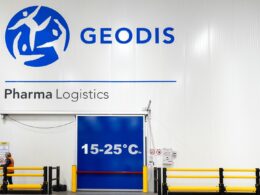After-sales service is facing a time of change. The market is enjoying steady growth bringing increased competition, acquisitions and customer demands. In the UK, independent businesses constitute 64 percent of the after-sales service sector. These businesses face the greatest challenge – potentially struggling to find the investment and skills required to adopt the new technologies required to service customers effectively, survive market consolidation and remain competitive.
In a report produced by SMMT and Frost and Sullivan in June 2016, businesses are advised that a greater emphasis on investment in technology, skills and equipment is critical to success in this market. Many currently use outdated enterprise resource planning (ERP) systems and few have capitalised on the benefits of cloud technology.
ERP must evolve
Service parts inventory and pricing management software are two key revenue levers for the after-sales supply chain. As competition grows, these tools will be pivotal in helping companies achieve success. Forty-eight percent of companies that have ‘effective’ supply chain visibility tools like these in place outperformed those that don’t. Yet many companies still employ ERP systems or rudimentary tools like Excel spreadsheets and simple ‘cost-plus’ formulas to manage service parts inventory and define price.
Even for larger organisations that are better equipped to cope with the challenges of digitisation, managing service parts inventory can be a daunting task when you have tens of thousands of products in hundreds of locations. It can be equally challenging to analyse and respond to changing market conditions that influence inventory pricing.
Most failed product repairs – upwards of 50 per cent – are attributed to poor part availability. The world’s most successful companies are investing in service parts planning technologies to improve their often sub-optimised service supply chains to ensure part availability levels are consistently higher than 95 percent.
Having the right parts in the right place at the right time is critical to a company’s ability to maximise uptime of the product they sell. Maximising uptime of these revenue generating assets is what customers care about most, and if the equipment is down, the manufacturer is losing money and pushing customers away. If equipment is down on a regular basis due to poor part availability, the customer will go off brand when they make their next purchase, killing the manufacturer’s high service margins.
Shift to cloud-based technology
The supply chain industry as a whole has been notoriously slow to embrace the cloud. The reluctance may be due to lingering concerns about continuity and security, or a greater comfort running applications like human resource technologies that don’t really pertain to the more competitive side of their business.
Since agility has become central to business success, however, the cloud has become critical for the supply chain – and its adoption is growing at a rate of 28 percent each year. It allows organisations to share information that can aid in a more efficient workflow. In addition, the cloud offers huge cost savings for companies that don’t have the resources to operate infrastructure like ERP systems on-site.
Software as a service (SaaS) allows organisations to buy the type and amount of computing services required specifically for their business. With features like remote access, common web service protocols and APIs, organisations get the opportunity to benefit from cutting edge technologies without the need to rip out your existing systems or install a completely new one.
Despite some concerns about the reliability and security of SaaS, there are far fewer service disruptions and security breaches among SaaS vendors than in traditional, on premise software environments. Additional benefits of SaaS include:
• Less upfront investment – There is no need to buy new servers and equipment. There is nothing to install.
• Rapid deployment – Most SaaS vendors can roll out software rapidly.
• Lower Total Cost of Ownership (TOC) – SaaS software is often less expensive considering the cost of upgrades, maintenance, support and monitoring.
• Less risk – It’s a lot easier to pilot software or select another vendor if the SaaS software is not a good fit.
• Easier Upgrades – With SaaS, you don’t have to install new software or renegotiate your contract. In most cases, new features and functionality are available in standard release cycles.
Manufacturers specifically have the opportunity to focus on the often sub-optimised service segment of their business. While SaaS and cloud adoption will continue overall, the rate of adoption in after-sales service organisations will be greater as companies increasingly look in this direction for opportunities to increase both top and bottom line performance. Post-sales service delivers attractive profit margins, which can truly be improved via cloud-based solutions.













